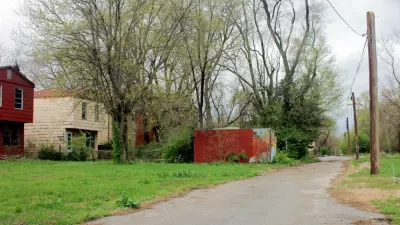The U.S. Census Bureau has released a new set of formulae that dramatically change the way poverty is determined in the U.S., leaving behind the one-size-fits-all approach in use since the 1960s.
The new formulae create eight different ways to measure poverty, based on actual living expenses, the impact of anti-poverty measures like welfare and the rising costs of medical care. The new measures are experimental, and will not immediately replace the 1960s-era measurement.
"Under a complex series of eight alternative measurements, the Census Bureau calculated that in 2009, the number of Americans living in poverty could have been as few as 39 million or as many as almost 53 million. Under the official calculation, the census estimated that about 44 million were subsisting on incomes below the poverty line of about $21,750 for a family of four. The alternatives generally set the poverty threshold higher, as much as $29,600 for a couple with two children.
In September, the census estimated the nation's poverty rate in 2009 was 14.3 percent. Under the alternatives, it could have been as low as 12.8 percent or as high as 17.1 percent."
FULL STORY: Census Bureau releases alternative measures of poverty

Maui's Vacation Rental Debate Turns Ugly
Verbal attacks, misinformation campaigns and fistfights plague a high-stakes debate to convert thousands of vacation rentals into long-term housing.

Planetizen Federal Action Tracker
A weekly monitor of how Trump’s orders and actions are impacting planners and planning in America.

San Francisco Suspends Traffic Calming Amidst Record Deaths
Citing “a challenging fiscal landscape,” the city will cease the program on the heels of 42 traffic deaths, including 24 pedestrians.

Defunct Pittsburgh Power Plant to Become Residential Tower
A decommissioned steam heat plant will be redeveloped into almost 100 affordable housing units.

Trump Prompts Restructuring of Transportation Research Board in “Unprecedented Overreach”
The TRB has eliminated more than half of its committees including those focused on climate, equity, and cities.

Amtrak Rolls Out New Orleans to Alabama “Mardi Gras” Train
The new service will operate morning and evening departures between Mobile and New Orleans.
Urban Design for Planners 1: Software Tools
This six-course series explores essential urban design concepts using open source software and equips planners with the tools they need to participate fully in the urban design process.
Planning for Universal Design
Learn the tools for implementing Universal Design in planning regulations.
Heyer Gruel & Associates PA
JM Goldson LLC
Custer County Colorado
City of Camden Redevelopment Agency
City of Astoria
Transportation Research & Education Center (TREC) at Portland State University
Jefferson Parish Government
Camden Redevelopment Agency
City of Claremont



























